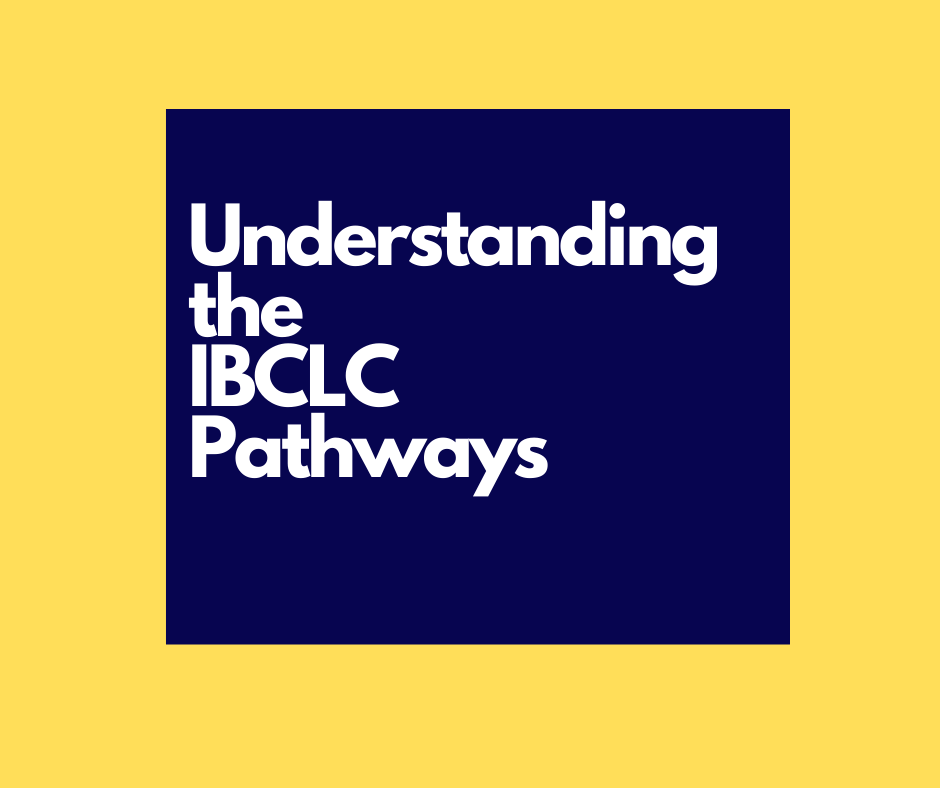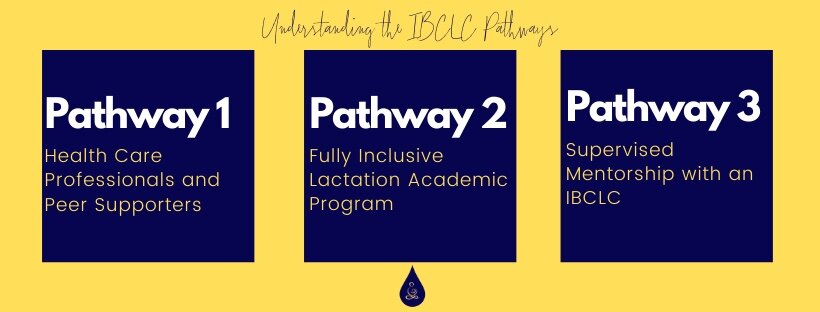Understanding the Different IBCLC Pathways
A common source of confusion amongst those considering a career as an IBCLC is the three pathways to becoming an IBCLC. Understanding these is important, as there are distinct differences and you could end up either duplicating efforts (which could add to the expense of becoming an IBCLC), or being unable to meet the criteria altogether.
Pathway 1:
Pathway 1 is perhaps the most confusing pathway for many people, as while the requirement to obtain 1000 hours of experience working with breastfeeding dyads is the same throughout this pathway, the options to make you a candidate for the pathway vary.
To complete pathway 1 you may be:
A recognized health professional as determined by IBLCE, who is considered to have already completed the health science education requirements by virtue of being in their profession, who works with breastfeeding dyads for 1000 hours. These hours do not have to be directly supervised.
A recognized peer support counselor with an approved peer support organization. Peer support counselors are trained by their respective organizations, and obtain their 1000 hours by acting within their role as a peer support counselor.
Clinical hours for pathway 1 are acquired on an hour per hour basis of care provided, and may be acquired in various approved ways to reach the 1000 hours within 5 years required to apply for the IBCLC exam. If you are not sure about your particular situation, and if you can accrue hours in a certain manner contact IBLCE directly. Clinical hours do not have to be directly supervised by an IBCLC on this pathway.
You will have to obtain your 90 hours of lactation specific education independently in Pathway 1. Peer counselor organization training is to my knowledge not counted towards this lactation education requirement by any of the organizations approved by IBLCE at this time.
Pathway 2:
Pathway 2 is a full academic program that covers your health science education requirements, your 90 hours of lactation specific education, and a 300 hours supervised internship. This would be a great option for someone who needs all of the educational background, and would like to do their training program in one clear and cohesive plan. This option may be the most expensive of the pathway options.
Pathway 3:
Pathway 3 is similar to Pathway 1, in that you have to obtain your health science education, and your lactation specific education independently. The difference here is that you seek a 500 hour mentorship with an IBCLC, some of which is done in person, some of which can be done virtually at this time. Typically candidates pay the IBCLC providing their mentorship for these hours. There are placement services that aim to link candidates to IBCLC mentors, or mentorships can be independently sought and arranged. IBLCE requires you to be approved for your Pathway 3 mentorship.






